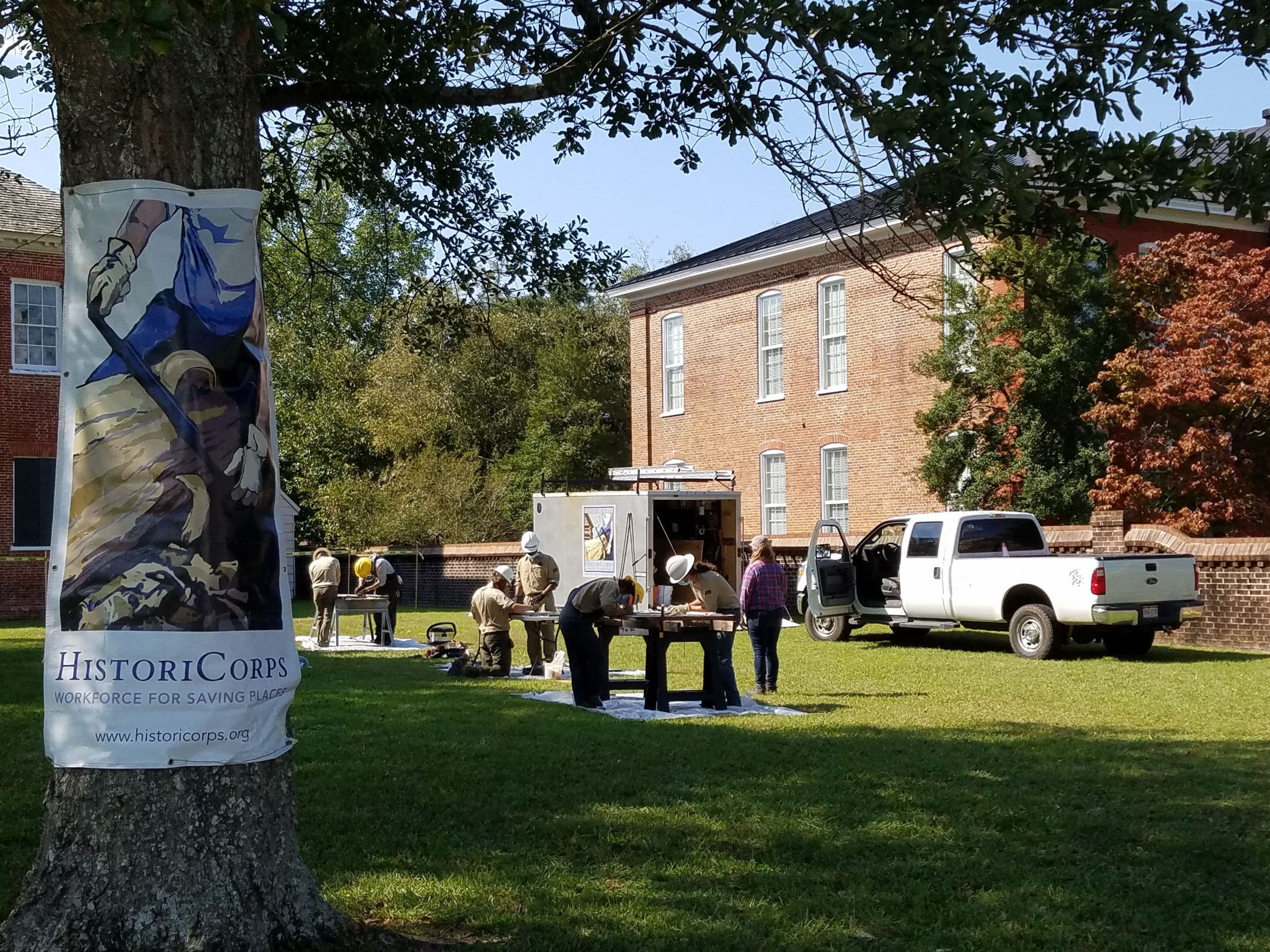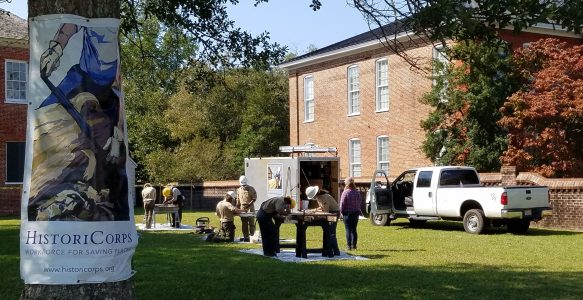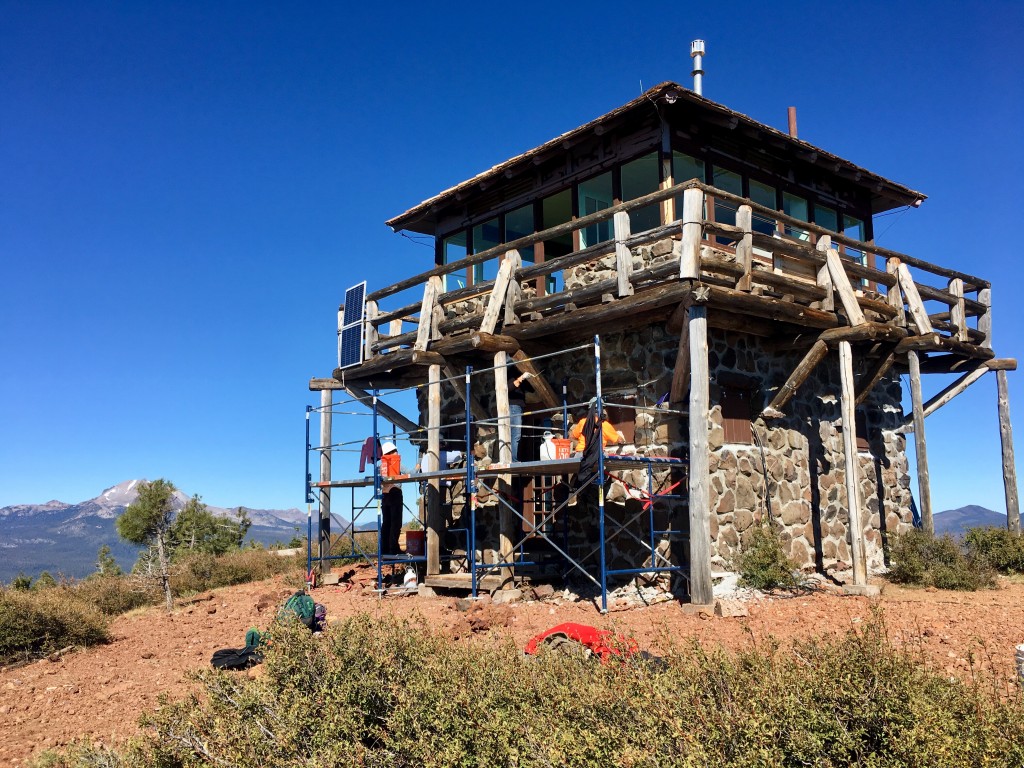HistoriCorps Volunteers: Saving Places Since 2009
Everyone can be a HistoriCorps Volunteer! We team up crews of volunteers from all walks of life with our expert field staff to learn preservation skills and put those skills to work saving historic places that have fallen into disrepair.
Join us for an adventure in the great outdoors this season! Help us hammer, reroof, chisel, repair, replace, paint, and sand historic buildings back to life. No previous construction experience is required – just a positive attitude and strong work ethic.

What to Expect
During a HistoriCorps project you can expect to make new friends, learn new skills, create life-long memories and have FUN! Remember:
- HistoriCorps provides all meals, tools, training, personal safety equipment, and materials.
- We help you prepare for your preservation project through providing a “pre-arrival packet” via email. The packet contains a lot of information like: logistics, safety precautions, a suggested packing list, benefits for volunteers, and more.
- We are always ready to answer your questions. Expect us to be in touch a few times before your project begins to confirm attendance, offer advice, and share updates.
A Sample Session for a Project
A typical HistoriCorps project session runs for about one week. Each project is different and varies due to location, weather, and project needs, but generally follows the sample agenda below:
| Day 1: Staging | |
| 5:00 – 7:00pm | Volunteers arrive at the campsite to meet HistoriCorps field staff and set up camp. Safety plans are discussed. |
| Days 2-5: Project Work | |
| 7:30am |
Breakfast
|
| 8:00am |
Safety Circle (trust us, this will be valuable and fun)
|
| 8:30am |
Begin preservation work
|
| 12:00pm | Break for lunch |
| 12:30pm | Continue preservation work |
| 3:00pm | Break for snacks and a presentation about the significance of the historic building/structure |
| 3:15pm | Continue preservation work and wrap up for the day |
| 6:00pm | Dinner and free time for stories around the fire or local excursions |
| Day 6: Departure | |
| 8:00am |
Final, and possibly most fun, safety circle
|
| 8:30am | Continue preservation work |
| 11:30am | Clean-up |
| 12:30pm | Lunch and project wrap-up |
| 1:00pm | Departure |
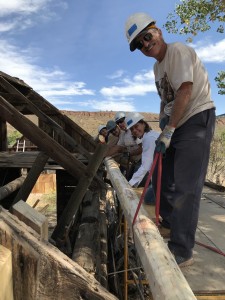
Soderberg Ranch, CO 2019
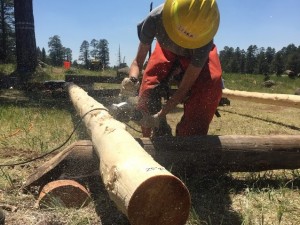
Learn and improve your skills with both power and traditional tools on HistoriCorps preservation projects
Guide to Project Description Icons
Rating the Relative Difficulty of Project Work
The colored dials below indicate the relative difficulty of a project’s scope of work. Most projects will fall somewhere in the middle of the range of difficulty dial. These dials only indicate the nature of the scope of work and do not necessarily rate the project site.

Green dials indicate the easiest projects with tasks that almost any person would be able to undertake. These projects will generally not involve working on roofs, at heights, or on foundations underneath buildings.
 Yellow dials will make up the bulk of HistoriCorps projects and are considered to be at of intermediate difficulty. The scope of work on these projects will involve some more challenging tasks like working on a ladder, moving heavy materials, and some roof and foundation work. If you are up for anything, these projects are for you.
Yellow dials will make up the bulk of HistoriCorps projects and are considered to be at of intermediate difficulty. The scope of work on these projects will involve some more challenging tasks like working on a ladder, moving heavy materials, and some roof and foundation work. If you are up for anything, these projects are for you.
The orange dial indicates our more difficult projects. The bulk of work on these projects will primarily be of a difficult or physically demanding nature, like roofing; carrying heavy logs; or working with primarily hand tools. If you’re up for anything and enjoy a challenge, these projects are for you.

The red dial indicates our most difficult projects. These projects may require a refundable deposit to register for them. These projects take place in remote areas that are difficult to access, require a significant increase of logistical planning and expenditure on HistoriCorps’ part, and require volunteers to be physically ready for difficult work in a difficult environment. Volunteers will be expected to carry their own gear for hours while hiking into the work and campsite; be prepared for inclement weather with minimal shelter; and work longer days than usual on rustic structures without access to power tools and modern technology. Sound fun? We thought so.

